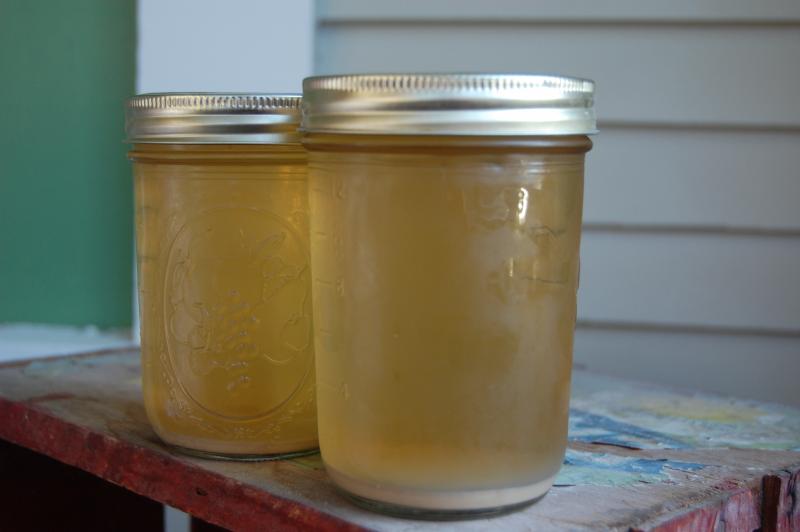OK, based on 1.05 and 5G batch here is how I figure it. I am sure there are some who will disagree but this is what I would do.
Mr. Malty tells you that for 5G at 1.05 you will need 175 billion yeast cells. Based solely on looking at your jars I would guess that you have about 15-20 ML in each jar. Mason Jars will have 100 ML markers. I assume that 1 ML of rinsed yeast will have between 4-4.5 billion cells per ML (from "Yeast"). A simple starter that is shaken intermitently over a 24-48 hr period should approximately double the yeast count from start to finish.
So to come up with 175 Billion cells you would need to start with approx 88 billion cells or 20-22 ML of yeast. I would use a 1000ML starter with 100 grams of DME.
If I am off on anything feel free to let me know. I am somewhat new to the yeast game but have done plenty of homework on it. If you intend to get further into this I would definitely recommend "Yeast" by Chris White and Jamil Z. Awesome book!!
Also if you plan to keep washing yeast and making starters I would either buy a stirplate for about $45 bucks or search for some DIY threads on it. It is pretty simple and straight forward. A stir plate will take your starter from simply doubling the cell count of you intial yeast up to 3-5 times the initial amount. So in your case if you had a stir plate you would only need 13-15 ML of yeast to start instead of 20-22.
Any experts care to weigh in on my thoughts or numbers?







